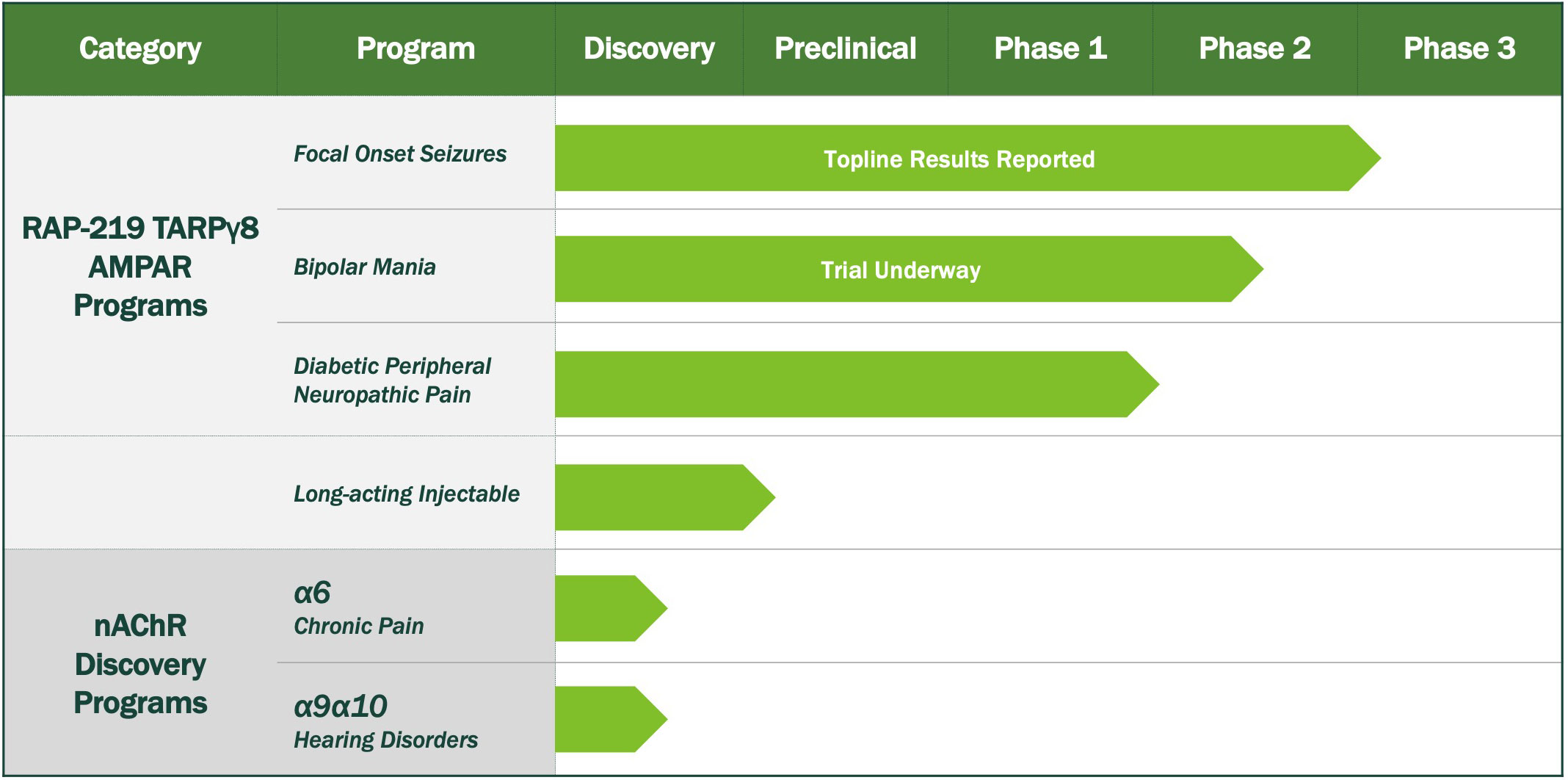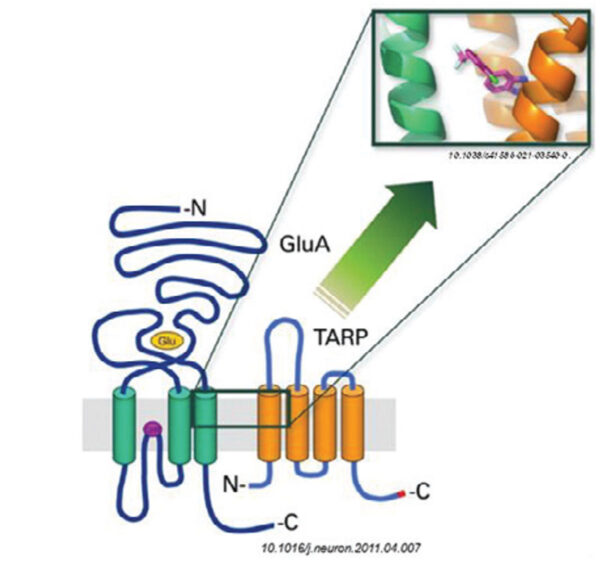Pipeline
We are advancing a pipeline of therapeutic programs with the goal of bringing new medications to patients living with CNS disorders, including focal onset seizures, pain, bipolar mania, and hearing disorders.

TARPγ8 AMPAR Programs

The ionotropic receptors for glutamate (iGluR) are ligand gated ion channels activated by the neurotransmitter glutamate. A subtype of iGluRs, AMPARs (α-amino-3-hydroxy-5-methyl-4-isoxazolepropionic acid receptors) influence the overall activity of neural networks. There are many FDA approved drugs that block the glutamate signaling pathway; however, they are associated with numerous side effects such as sedation, ataxia, cognitive impairment, and neuropsychiatric symptoms. These undesired effects can be exacerbated by the broad interactions of these drugs with glutamate receptors throughout the brain.
RAP-219 is a clinical-stage small molecule designed to achieve neuroanatomical specificity through its selective targeting of a RAP known as TARPγ8, which is associated with the neuronal AMPAR, a clinically validated target for epilepsy. Whereas AMPARs are distributed widely in the CNS, TARPγ8 is expressed only in discrete regions – most enriched in the hippocampus (which is often involved in focal epilepsies) and also present in the amygdala and cortex. Because of this restricted expression of TARPγ8, we believe RAP-219 has the potential to provide a differentiated clinical profile, including improved activity and tolerability along with a higher therapeutic index, potentially providing more patients with sustained therapeutic benefit without intolerable side effects.
In addition to evaluating RAP-219 in patients with focal onset seizures, we are also evaluating the compound’s potential to provide therapeutic benefit in peripheral neuropathic pain and bipolar disorder. TARPγ8 is expressed in areas of the CNS associated with pain including the anterior cingulate cortex and the dorsal horn of the spinal cord. TARPγ8 inhibition has demonstrated preclinical activity in third-party pain models and pain behavior improvements in animal models of acute, inflammatory, and neuropathic pain. Similarly, in neuro-imaging studies in patients with bipolar disorder typically show that the hippocampus, a brain region where TARPγ8 is expressed, exhibits abnormal activation and hyperactivity as well as elevated responses to emotional stimuli, attentional activities, and memory tasks. Also, several antiseizure medications have shown clinical benefit in both epilepsy and bipolar.
nAChR Programs
We have two advanced discovery-stage nicotinic acetylcholine receptor (nAChR) programs stemming from our RAP technology platform. Our first discovery-stage nAChR program comprises modulators of α6 nAChRs that we are developing for the treatment of chronic pain. Our second discovery-stage nAChR program comprises modulators of α9α10 nAChRs that we are developing for the treatment of hearing disorders. We continue to leverage our RAP technology platform to discover additional product candidates.